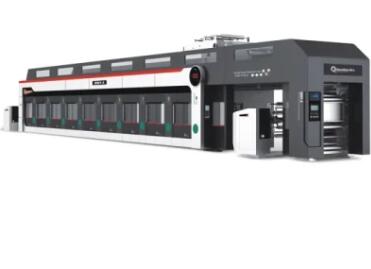Exploring the Versatility of Printing Presses: Handling Different Types of Paper and Materials
2024-02-21
Introduction:
Printing presses are marvels of engineering that have revolutionized the way information is disseminated and products are marketed. One of the key features that make printing presses indispensable in various industries is their ability to handle a wide range of paper types and materials. In this blog, we'll delve into the mechanisms behind how printing presses manage different substrates, from traditional paper to specialized materials, enabling diverse printing applications.
Understanding Printing Presses:
Printing presses are complex machines designed to transfer ink onto substrates, such as paper, cardboard, plastic, metal, and fabric, to create printed materials. They consist of multiple components, including printing plates, ink rollers, impression cylinders, and paper feed systems, working in synchronization to produce high-quality prints.
Handling Different Types of Paper:
1. Thickness and Weight: Printing presses are equipped with adjustable paper feed mechanisms that can accommodate various paper thicknesses and weights. This flexibility allows them to handle everything from thin, lightweight paper to thick cardstock without compromising print quality or machine performance.
2. Texture and Surface Finish: Different types of paper have distinct textures and surface finishes, such as matte, glossy, or textured. Printing presses utilize specialized rollers and impression cylinders to ensure proper ink adhesion and uniform print quality across various paper textures.
3. Coated and Uncoated Paper: Coated papers, which have a smooth, glossy surface, and uncoated papers, which have a more porous texture, require different ink formulations and drying methods. Printing presses are equipped with drying systems that can adjust temperature and airflow to accommodate the specific requirements of coated and uncoated papers.
Handling Specialized Materials:
1. Synthetic Substrates: Printing presses can handle synthetic materials such as polyester, vinyl, and polypropylene, commonly used for applications like labels, signage, and packaging. Specialized ink formulations and curing processes ensure optimal adhesion and durability on synthetic substrates.
2. Metal and Plastic: Advanced printing presses are capable of printing directly onto metal and plastic substrates using techniques such as screen printing, pad printing, and UV curing. These processes require specialized equipment and ink formulations tailored to the unique properties of metal and plastic surfaces.
3. Textiles and Fabrics: For textile printing applications, such as apparel, banners, and upholstery, printing presses utilize techniques such as screen printing, digital printing, and heat transfer. These methods allow for precise ink penetration and color vibrancy on various types of fabrics, including cotton, polyester, and nylon.
Conclusion:
Printing presses are versatile machines capable of handling a wide range of paper types and materials, from traditional paper to specialized substrates like plastics, metals, and textiles. By utilizing adjustable paper feed systems, specialized ink formulations, and tailored printing techniques, printing presses can achieve high-quality prints on diverse substrates for a wide range of applications. Whether it's producing marketing materials, packaging products, or decorating textiles, printing presses play a crucial role in bringing ideas to life on various materials with precision and efficiency.



